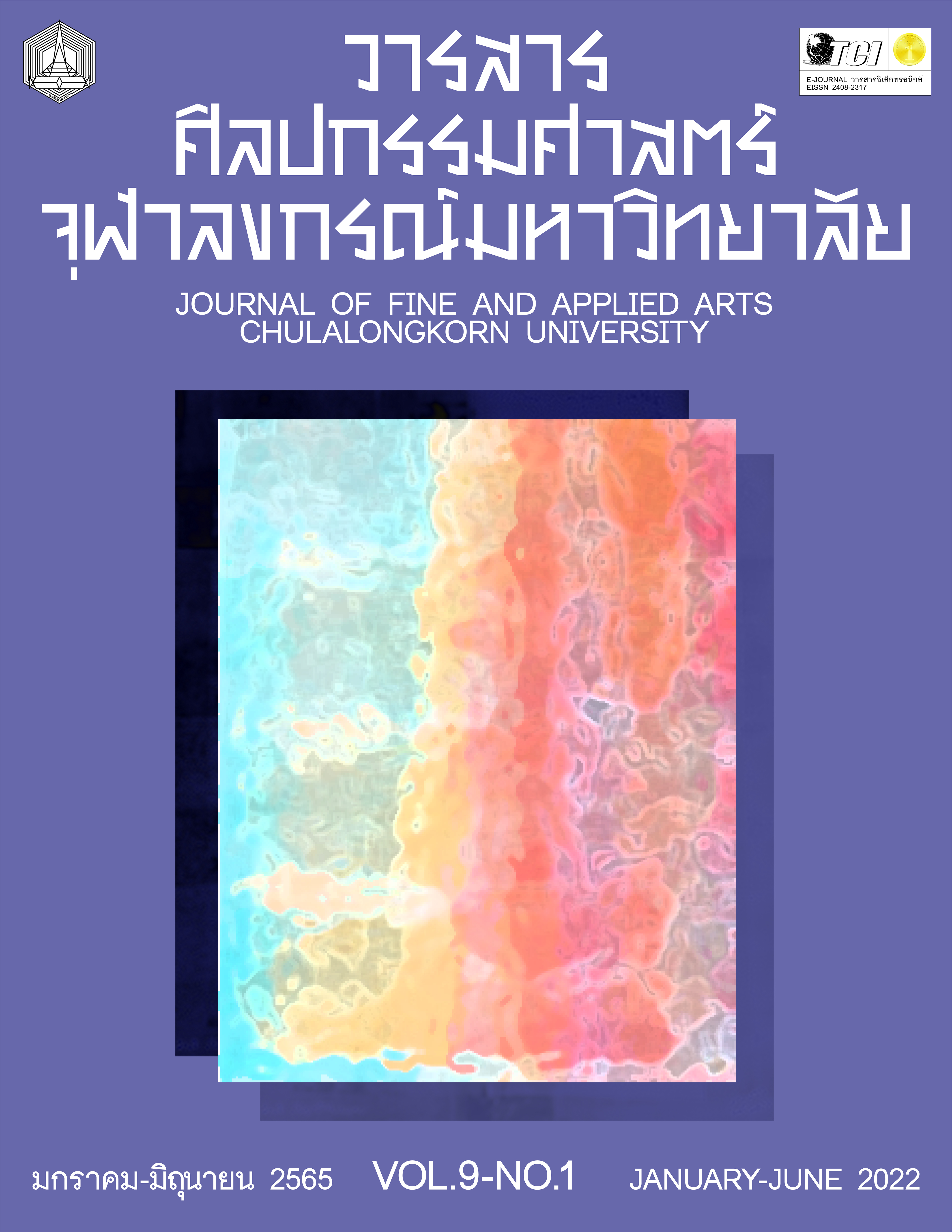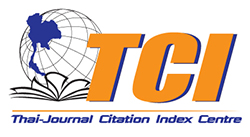FROM STRONGEST FAITH TO INSPIRATION FOR ABSTRACT PAINTING CREATION
Keywords:
Faith, Islam, Abstract Art, Islamic Art, Islamic CalligraphyAbstract
In the disruptive world nowadays, social media is an important and influential factor on individuals thought, affective and mind. Social media overuse creates an apathy between human beings, increases criticizing and faulty social judgement, spread uncontrollable violence to young people. These situations isolate people from morality and be the cause of restraint and irrational behaviors. The research ‘From the Strongest Faith to an Inspiration for Abstract Painting Creation’ has the objective to present the concept of bringing back virtue of the goodness in people by representing artworks inspired from ‘Faith in God’ of the artist.
The research process started with studying two contexts included; 1) the meaning of faith in religion and model persons and 2) the Abstract art and its painting process. From the literature review, the author found the connection between his strong faith in Islam and a kind of abstract painting in Islamic art. Especially for Islamic Art Calligraphy, one of the important Islamic art that is used to convey faith in Islam, inspired the artist to represent his depth belief in God with Abstract calligraphy painting in Arabic characters.
References
กรุณา-เรืองอุไร กุศลาสัย. อมตะวจนะคานธี. กรุงเทพฯ : บ้านพระอาทิตย์, 2554.
คาลิล ยิบราน. ปรัชญาชีวิต. แปลโดย ระภี ภาวิไล. กรุงเทพฯ : ผีเสื้อ, 2559.
จิระพัฒน์ พิตรปรีชา. โลกศิลปะศตวรรษที่ 20. พิมพ์ครั้งที่ 2. กรุงเทพฯ : เมืองโบราณ, 2552.
ซากิรฺ นาอิก. แนวคิดเรื่องพระเจ้าในศาสนาสำคัญของโลก. แปลโดย บรรจง บินกาซัน. กรุงเทพฯ : ศูนย์หนังสืออิสลาม, 2557.
บรรจง บินกาซัน. สาราณุกรมอิสลาม สำหรับเยาวชนและผู้เริ่มสนใจ. พิมพ์ครั้งที่ 2. กรุงเทพฯ : อัล อะมีน, 2547.
ปิยะแสง จันทรวงศ์ไพศาล. ศิลปะอิสลาม. กรุงเทพฯ : สำนักพิมพ์แห่งจุฬาลงกรณ์มหาวิทยาลัย, 2561.
รพินทรนาถ ฐากุร. คีตาญชลี. แปลโดย กรุณา-เรืองอุไร กุศลาสัย. กรุงเทพฯ : แม่คำผาง, 2555.
รพินทรนาถ ฐากูร. สาธนา. แปลโดย ระภี ภาวิไล. กรุงเทพฯ : สำนักพิมพ์ภารตะ, 2555.
ศูนย์ส่งเสริมศิลปาชีพระหว่างประเทศ (องค์การมหาชน). หัตถกรรมในวัฒนธรรมมุสลิม. กรุงเทพฯ : ไทภูมิพับลิชชิ่ง, 2560.
สมาคมนักเรียนเก่าอาหรับ ประเทศไทย. ความหมายอัลกุรอานเป็นภาษาไทย ภาค 3 ญุซฺ ที่ 21-30. กรุงเทพฯ : ทิพยวิสุทธิ์, 2535.
สรรเสริญ สันติธญะวงศ์. ศิลปะในศตวรรษที่ 20. นครปฐม : โรงพิมพ์มหาวิทยาลัยศิลปากร, 2560.
สัลมาน อัล เอาดะฮฺ. สู่จิตวิญญาณแห่งสันติ. แปลโดย สมาคมยุวชนมุสลิมแห่งประเทศไทย. กรุงเทพฯ : สำนักวิชาการและสื่อเผยแพร่ ยมท. , 2560.
อัจจิมา เจริญจิตร ตนานนท์. “นามธรรมของสายน้ำ.” วิทยานิพนธ์ระดับปริญญาดุษฎีบัณฑิต, มหาวิทยาลัยศิลปากร, 2560.
อาลี เสือสมิง. อารยธรรมอิสลาม. กรุงเทพฯ : ศูนย์หนังสืออิสลาม, 2556.
Carey, Moya. An Illustrated History of Islamic Art & Design. Wigston: Southwater, 2012.
Howard, Annabel. This is Kandinsky. London: Laurence King, 2015.
Kandinsky, Wassily. On the spiritual in art. New York: The Solomon R. Guggenheim Foundation, 1946.
Shawkat, Wissam. “About Me.” https://www.wissamshawkat.com/about, 2017.
Downloads
Published
Issue
Section
License
ลิขสิทธิ์ของบทความเป็นของเจ้าของบทความ บทความที่ได้รับการตีพิมพ์ถือเป็นทัศนะของผู้เขียน
กองบรรณาธิการไม่จำเป็นต้องเห็นด้วยและไม่รับผิดชอบต่อบทความนั้น






